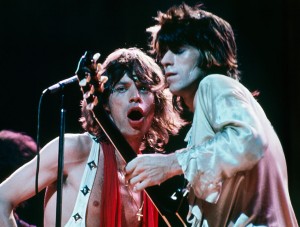 It is standard practice to offer to customers a range of quality levels. In clothing, electronics, and cars we see firms offer a range of products as a means of price discrimination: some customers are on a budget, or don’t care so much about the luxury of the item, and are looking for something basic and low-price. Other customers really do care about distinctions of quality, and are willing to pay to get the best. It’s not difficult then to see the logic in offering standard and premium goods.
It is standard practice to offer to customers a range of quality levels. In clothing, electronics, and cars we see firms offer a range of products as a means of price discrimination: some customers are on a budget, or don’t care so much about the luxury of the item, and are looking for something basic and low-price. Other customers really do care about distinctions of quality, and are willing to pay to get the best. It’s not difficult then to see the logic in offering standard and premium goods.
The rule of thumb is this: the quality difference must be big enough, and the price differential small enough, to ensure that the high willingness-to-pay customers choose the higher-price-higher-quality item and not switch to the lower-price-lower-quality item. This puts limits on the degree to which you can make the most from a customer willing to pay high amounts.
Consider the common practice of ‘scaling the house’ at performing arts venues. You may have a few audience members willing to pay something in the hundreds of dollars for a ticket, because they so want to see this production. But if there are only a few of them, and most audience members are only willing to pay in the neighborhood of $20 a ticket, you cannot set aside the best dozen seats charging $200 while all other seats are $20, since no one (except with a charitable motive) will buy the $200 seat. Why do that when the seats right next to them are going for only $20. This is why so many arts organizations are nonprofit – they need to be able to rely on ‘voluntary’ price discrimination, i.e. donations.
Sometimes the quality differential is produced by deliberately making the lower-quality version of the item worse. Publishers delay the release of paperback versions of books, making readers wait, although there are no technological reasons why the paperback could not be released the same day as the hardcover. But the reason is obvious – if the two versions were released the same day, too many fans of the author, who would otherwise splurge on the hardcover, would simply get the paperback. Those who want to get cheap day-of-show tickets on Broadway must go in person and queue, although it’s not as if the ticket vendor did not have a telephone or internet access. Shippers ensure that those who choose the cheaper, slower service indeed receive the later delivery date even if the package arrives in the destination city early. As I’ve noted before in this space, this is not all bad for consumers – I would rather have delayed-release paperbacks than no paperbacks, I like the option of half-price day-of-show tickets, and I don’t always need overnight shipping.
A question for discussion: are nonprofits less willing to offer low-quality versions of offerings than commercial firms? In a classic (at least I think so) analysis from the American Economic Review in 1970 (link to the JSTOR edition), Joseph Newhouse claimed that commercial firms, motivated by profit, would provide a range of quality levels according to market conditions, whether through one owner (e.g. Banana Republic / Gap / Old Navy) or through multiple firms (e.g. fast food, mid-range, and high-end restaurants), but that nonprofits, where employees tend to have much more say in how the organization is run, will aim for the highest quality level that is economically feasible, because that is what employees want. Physicians will want their nonprofit hospital to deliver the highest quality care possible rather than offering lower-cost options. Faculty prefer colleges that provide lower teaching loads and time for research than higher teaching loads and (in turn) lower tuition fees. A nonprofit orchestra will aim to be the best (i.e. most expensive) possible given the local market, rather than being an “ok” orchestra with lower costs and ticket prices.
How not to do quality differentials? The Daily Telegraph reports:
Rolling Stones fans who bought VIP tickets for their London summer concert have demanded refunds after being “misled” over where they would be able to stand.
Fans paid hundreds of pounds for a place at the front of the crowd in Hyde Park, only to be told that people with the cheapest tickets will have access to the same area.
The concert’s organiser has now removed descriptions from its website which claimed that the £299 “tier one” tickets would allow them to stand “directly in front of the stage”.
According to the original wording the second tier, costing £199, would provide “access to an area closer to the stage than general admission”.
Anger among VIP ticket holders was sparked by a statement issued by the band on Twitter which said “tier three” ticket holders, who paid £95, will also be able to get to the front.
An official plan was later released by the band showing the general admissions area reaching to the front of the stage, with a “gold circle” for VIP members to the side. …
One fan said: “If this layout had been there pre the tickets actually going on sale, nobody would have bought anything apart from a £95 ticket.

[…] week I posted about selling at differential quality levels, noting that nonprofits might be reluctant to sell to […]